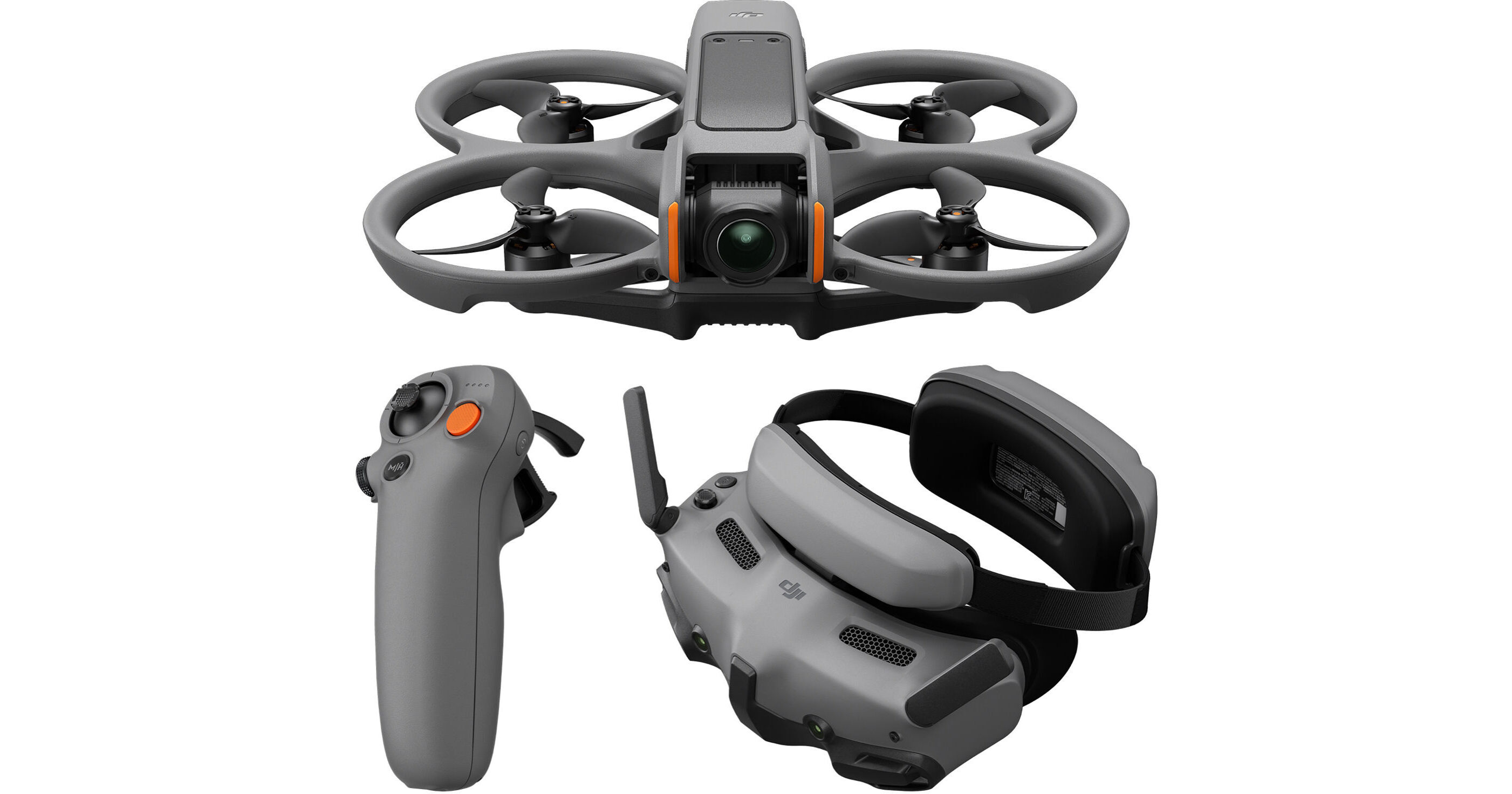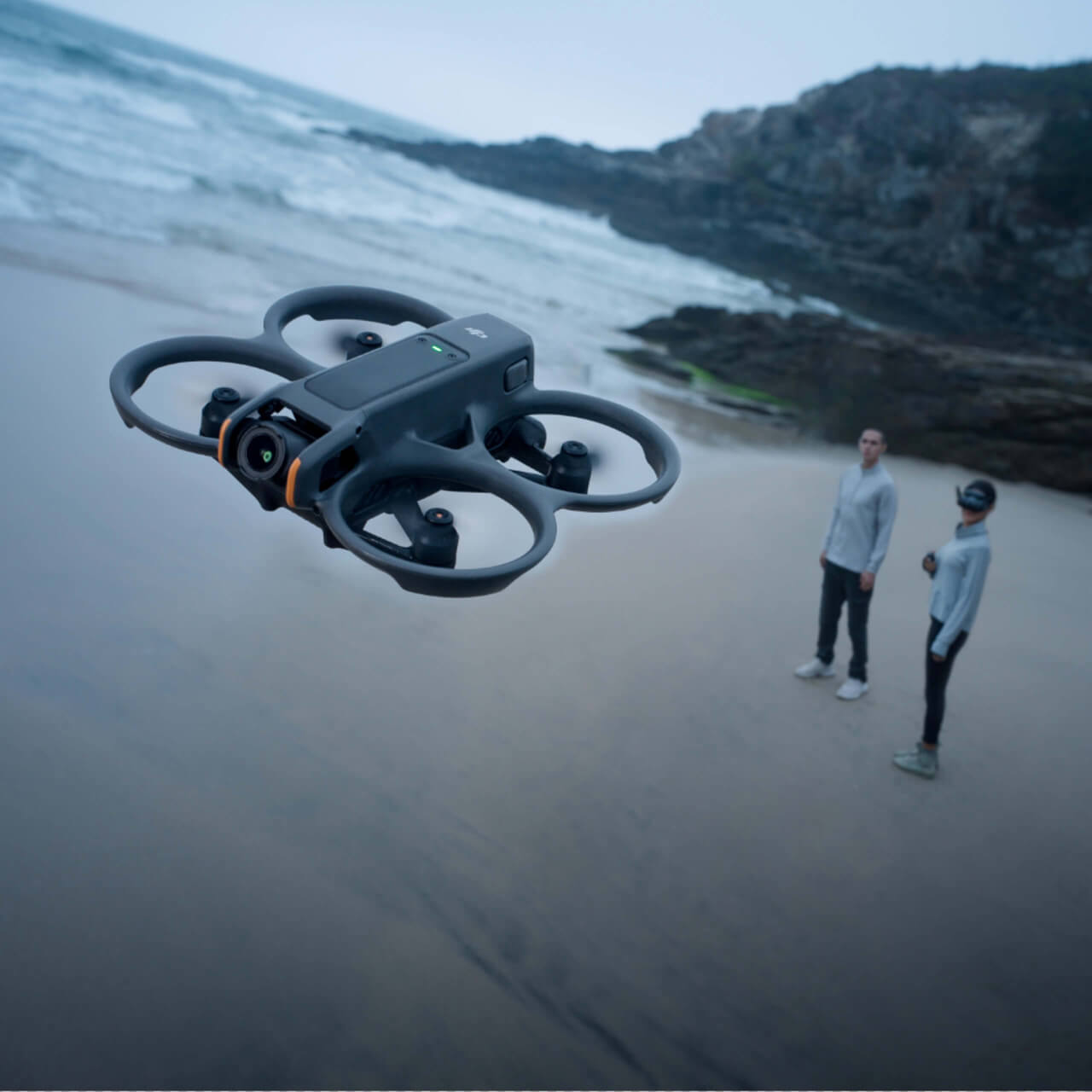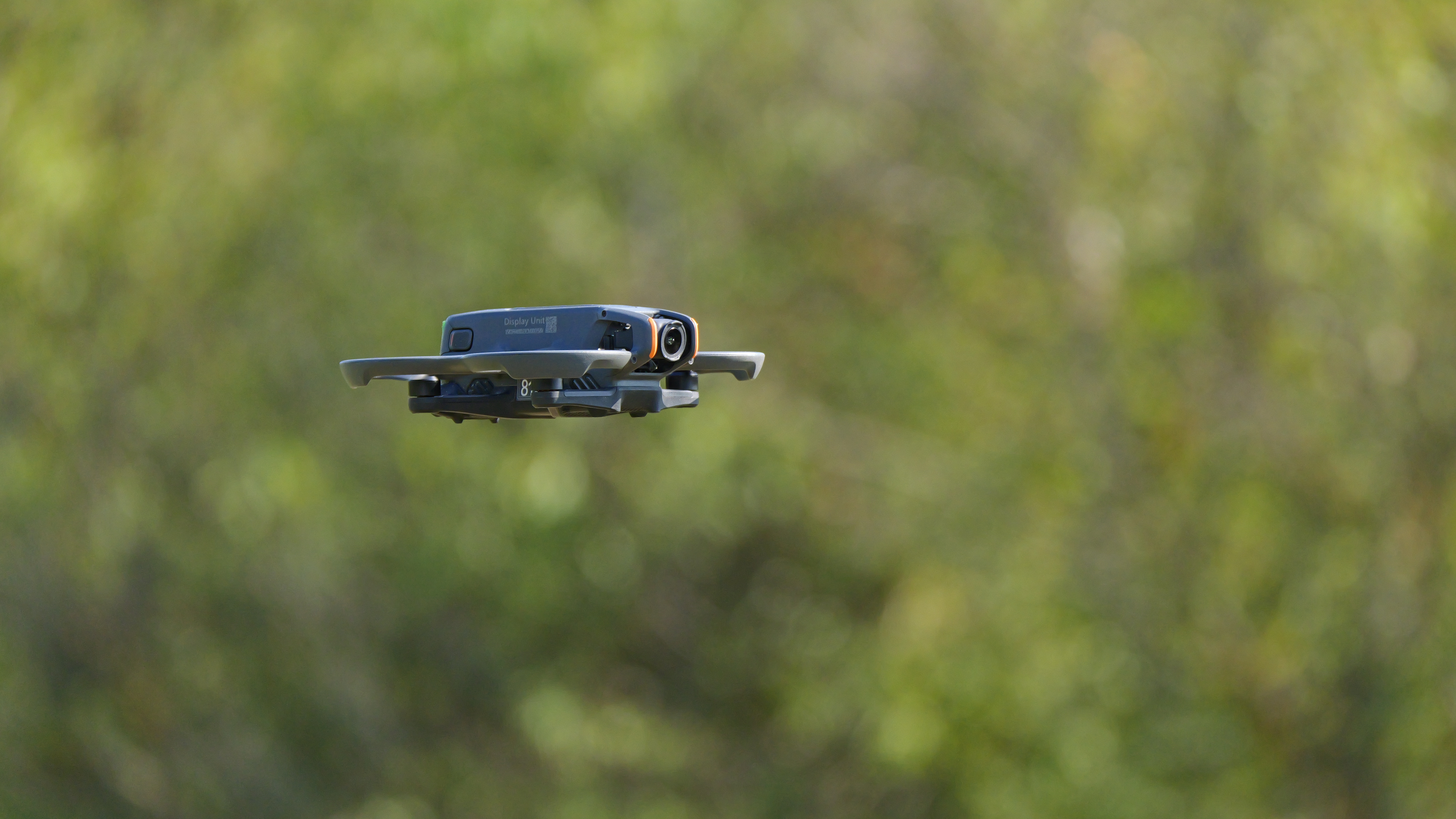DJI Avata 2 is already the third generation of FPV (first-person view) drone from DJI. It must be recognized that the manufacturer is not resting on its laurels, but is constantly innovating. Avata 2 thus comes with several improvements and combines top image quality and simple control. The novelty is ideal not only for experienced pilots, but also for beginners who want to experience an unforgettable flight with a minimal need for learning. So let’s take a look at the main features, image quality, flight capabilities and overall improvements that Avata 2 brings compared to its predecessor. The first thing you will notice about the new product is a significant redesign compared to its predecessor. With a longer propeller wheelbase and a lower center of gravity, the new Avata achieves better aerodynamics and stability during flight. The dimensions are 184.5 × 212 × 64 mm, and the weight of the drone without the battery is significantly lower, namely by 30 grams, which improves its flight characteristics. Thanks to this, this model is less prone to falling and increases its maneuverability, which will be appreciated especially by beginners.
However, Avata 2 is not only about durability, but also about ease of use. The package includes the new DJI Goggles 3 and the DJI Motion Controller 3, which is an improvement over the previous version. It is very intuitive and allows even inexperienced users to comfortably control the drone and learn to fly it very quickly. As in previous versions, you control the drone by moving your wrist with the controller, while watching a ball in the glasses that shows where the drone is flying. You control the trigger with your index finger, which controls the flight speed. The fact is that even a complete beginner can operate a drone with this control in 2-3 minutes. That is why the manufacturer also packages it directly. For those who prefer traditional control with a pair of sticks, DJI also offers the DJI FPV Remote Controller 3, which is also used in combination with the goggles. However, this controller is not included in the package and must be purchased separately. One of the most exciting new features of DJI Goggles 3 with DJI Motion Controller 3 is the new Easy Acro feature set. It allows even less experienced pilots to perform basic aerobatic maneuvers, such as forward and backward flips, 180° twists and turns, or sideways flight with one push of a button. The Easy Acro mode is activated in the upper pull-out menu and three options Slide, 180° Drift and Flip are displayed on the left side of the image. You select which function you want with the rotary controller, and then start the maneuver with the joystick. In Slide mode, you use the joystick to control ascent, descent and sideways flight. In the 180° Drift mode, you make a 180° turn to one side or the other, that means the drone reverses and shoots from the other side. Flip mode performs a projection to the side you tilt the joystick to. The drone performs these maneuvers autonomously after pressing a button, while monitoring the altitude and battery status. If you are too low or have a low battery, the maneuver will not be performed. This opens up the possibilities of FPV flight even for those who do not want to learn advanced control techniques.

One of the main reasons why you should consider buying the DJI Avata 2 is the significant improvement in image quality. This model is equipped with the new OcuSync 4 (O4) video transmission system, which guarantees minimal latency and improved image dynamics. This means that it captures more detail in both dark and bright parts of the frame, greatly improving the overall visual impression of the video. The O4 system enables transmission at a speed of up to 60 Mb/s over a distance of up to 13 km, and is also less susceptible to outages or loss of signal than its predecessor, even when flying behind an obstacle. The modernized DJI Goggles 3 with O4 support contain a pair of OLED displays with full HD resolution and a refresh rate of up to 100 Hz. The battery is placed on the holder behind the head and creates a counterweight for the glasses. On its back, there is a quick-adjustment mechanism for precise adjustment according to the size of the head. On the bottom of the glasses, there are a pair of controls for precise adjustment to the eyes. What is new is that when correcting diopters, the displays show you the set value for each eye. Of the glasses for DJI drones supplied so far, these have the best ergonomics and image without competition. The battery will keep them alive for about 3 hours, the advantage is that they support up to 20 W charging, so they are quickly charged. The glasses also have a slot for a microSD card, so you can record all flights with the displayed data from the glasses.

The camera uses a 1/1.3-inch CMOS sensor that supports 12 Mpx resolution. DJI Avata 2 can shoot video up to 4K resolution at 60 frames per second, which means that even during high-speed maneuvers, the image will be clear and smooth. The camera has a fixed aperture of f/2.8 and a field of view of up to 155 degrees, which allows you to capture large panoramas and dynamic shots from different angles. Its advantage is also the ability to adjust its inclination during flight from -95° to 90°, which means that you can shoot scenes directly below or above you without having to change the position of the drone. For those who want even more control over their video, Avata 2 allows you to shoot in D-Log M mode, which means you can fine-tune your footage in post-production.
DJI Avata 2 offers three flight modes to suit different levels of pilot experience:
- Normal mode: Ideal for beginners, providing maximum safety and stability. In this mode, you can fly with high precision. This mode is also suitable for indoor flights or for flying in narrow spaces.
- Sports mode: It is designed for those who are looking for more excitement. It allows for faster climb and descent speeds as well as more control over the drone.
- Manual mode: Available only with DJI Remote Controller 3, manual mode is intended for experienced FPV pilots. In this mode, all assistance is disabled and the pilot has full control over the drone. This mode allows you to perform acrobatic maneuvers such as flips and spins, but requires considerable experience and hours of training, preferably in a simulator, to avoid crashes.
Compared to the previous model, Avata 2 offers better battery life. The drone is equipped with a battery with a capacity of 2150 mAh, which provides up to 26 minutes of flying time during slower flight in windless conditions. During intensive maneuvers and flying in windy conditions, the flight time will of course be reduced.

Flying with a novelty is really an experience. The image quality has improved compared to its predecessor, and with the new glasses there are minimal dropouts, even if you fly the drone behind a large obstacle. Like its predecessor, the Avata 2 also has a Turtle mode, which means that if the drone falls somewhere and remains on its back, you can thus turn it to the correct position and take off again, if conditions allow. Interesting are the Easy Acro modes, with which you will have even more fun. The new Goggles 3 are also definitely worth paying attention to. They, including the DJI Motion Controller 3, can be used with all DJI drones that use the O4 standard, i.e. with the Air 3, Mini 4 Pro models and the new NEO. The Easy Acro mode also works with the NEO model. In the case of film drones, it is possible to control the camera by tracking the movement of the head. In addition, the glasses can be connected via cable or Wi-Fi to mobile devices with the DJI Fly application installed, so that the image seen by the pilot can be monitored. You can also wirelessly connect a pair of Goggles 3. Videos can be downloaded from the drone in preview or full quality directly to the mobile using the Quick Transfer function via Wi-Fi at a speed of up to 30 MB/s.
PROS, CONS:
+ Simple control, image quality, equipment, durability, endurance
– Nothing important
PARAMETERS:
DJI Avata 2: take-off weight about 377 g, dimensions (L × W × H): 185 × 212 × 64 mm, maximum horizontal speed 19 m/s in manual mode in EU countries, maximum take-off height 5000 m, maximum flight time approx. 23 minutes, maximum hovering time about 21 minutes, maximum flight distance 13 km, wind resistance 10.7 m/s (level 5), operating temperature -10 to 40 °C, navigation system GPS + Galileo + BeiDou, hover accuracy vertical ±0.1m (with visual positioning system), ±0.5m (with GNSS), horizontal ±0 .3 m (with visual positioning system), ±1.5 m (with GNSS), internal memory 46 GB, category C1 (EU) camera: image sensor 1/1.3″, 12 Mpx, focal length 12 mm, f/2.8, ISO range 100-25600 (automatic and manual), shutter speed video 1/8000-1/30 s, photo 1/8000-1/50 s, maximum size image 4000 × 2256 (16:9), 4000 × 3000 (4:3), JPEG photo format, video resolution 4K (4:3), 3840 × 2880 up to 30/50/60fps, 4K (16:9), 3840 × 2160 up to 100fps, video format MP4 (H.264/H.265), maximum video data rate 130 Mb/s, image stabilization RockSteady 3.0+ and HorizonSteady, can be turned off, battery capacity 2150 mAh, charging time about 45 minutes with charging hub (60 W)
Price: drone only: 489 EUR; Fly More Combo: 999 EURFly More Combo (3 batteries): 1199 EURDJI Remote Controller 3: 199 EUR
Borrowed by: www.smartwear.sk
Source: www.nextech.sk


